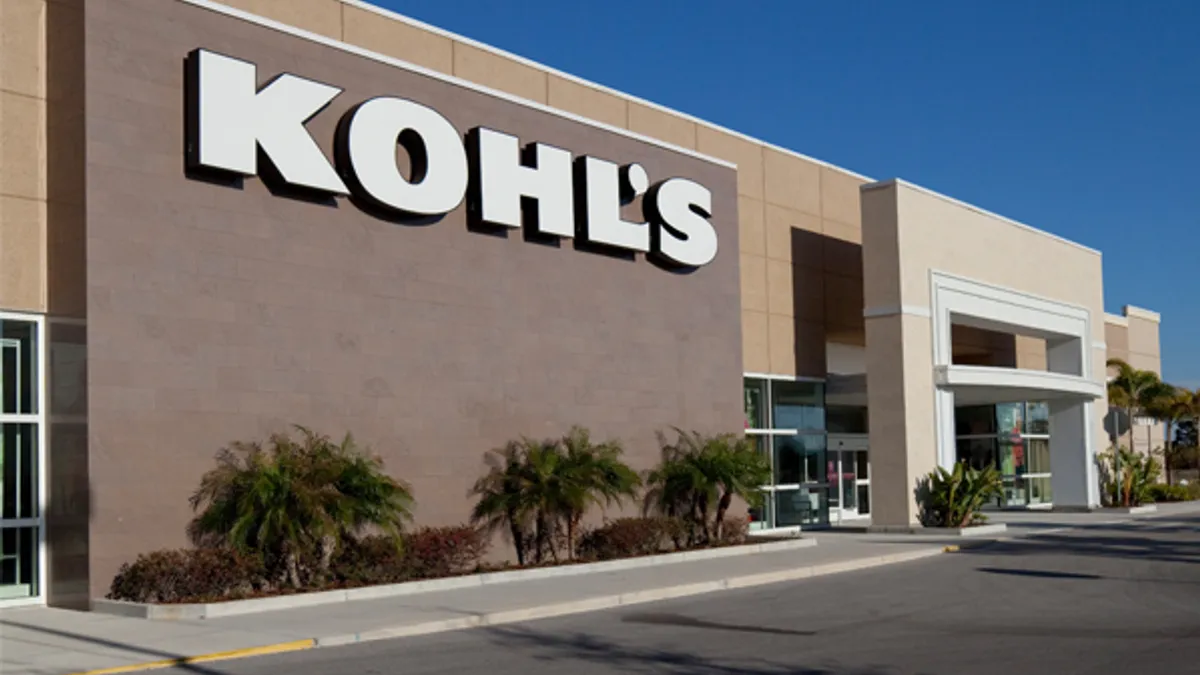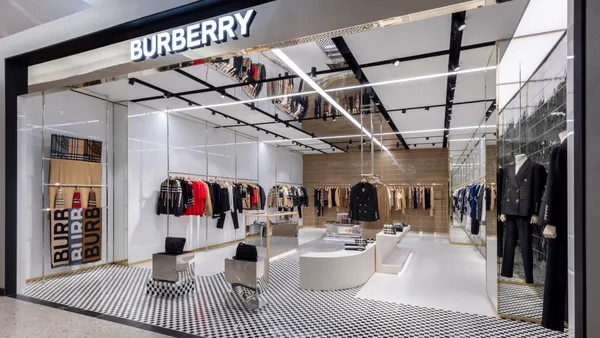Dive Brief:
- Kohl's profitability took a hit from shipping costs in the second quarter after the retailer was forced to ship climbing e-commerce orders from inventory locked in closed stores, executives reported Tuesday. Digital sales were up nearly 60% year over year for the retailer.
- CFO Jill Timm attributed 275 basis points of margin loss to extra shipping costs. "This was due primarily to the increased split shipments during the period, as we work down inventory in stores," Timm said.
- The retailer has been on a mission to reduce inventory liability due to the uncertainty brought by the pandemic. The company achieved a 26% decrease in inventory in Q2 after forecasting a 60% cut to receipts.
Dive Insight:
In the second quarter, Kohl's learned what happens when inventory plummets as online orders climb: split shipments climb too. With little fresh inventory coming into the system and in-store sales dropping, the retailer shipped online orders from its retail locations, leading to more split shipments and increased costs.
"Our inventory placement wasn't optimized as the stores were shut for such a significant period of time," Timm said.
Closed stores locked inventory in locations optimized for pre-pandemic store demand and not e-commerce. So in order to fulfill orders without increasing total inventory in the system, Kohl's had to ship product from wherever it was.
The pandemic has added a new wrinkle, but the problem of inventory placement is not uncommon in the age of faster and faster delivery times. Amazon reported quarters of unanticipated inventory building and placement costs as it transitioned to one-day Prime service since fast shipping requires the right item to be at the right location if a shipper wants to avoid exorbitant shipping costs. In the early days of one-day Prime, inventory wasn't paired with anticipated demand in terms of location and costs increased until the company could better optimize allocations around its network.
Elevated shipping costs will continue through the rest of the year, but they should be a less significant drag on margin as the retailer gets its inventory more optimally positioned, Timm said, naming inventory optimization as the number one lever to bring up margins in the second half. Gross margin fell from 38.8% in Q2 2019 to 33.1% in Q2 2020 — though still dramatically improved from the 17.3% the company reported in Q1.
"As we look to the balance of the year, we will continue to manage inventory tightly with the opportunity to chase into demand," Timm said. Chasing demand was once a rare concept in the apparel business since the industry traditionally worked with lead times longer than 20 weeks.
However, Kohl's has spent the last few years, starting when CEO Michelle Gass was head merchandiser for the company, reducing those lead times in order to be more nimble and responsive to consumer preferences and changes in trends.















